Ijraset Journal For Research in Applied Science and Engineering Technology
- Home / Ijraset
- On This Page
- Abstract
- Introduction
- Conclusion
- References
- Copyright
Sewage Gas Monitoring and Alert System
Authors: Payal Gomase, Kanchan Bembalge, Ravina Hedau, Shruti Modak, Khushi Tagde
DOI Link: https://doi.org/10.22214/ijraset.2024.64332
Certificate: View Certificate
Abstract
In order to ensure public health and environmental sustainability, sewage systems are essential. However, the buildup of toxic gases in these systems poses significant threats to human health and environmental problems. The design and implementation of a smart Internet of Things device for sewage gas monitoring and alert system are presented in this research study. To identify and alert about the presence of dangerous gases in real-time, the suggested system combines gas sensors, data processing algorithms, connection characteristics, and an alert mechanism. The gadget includes programmable alert settings, remote monitoring capabilities, and the possibility of interaction with current wastewater management systems. The device\'s usability, data processing methods, communication protocols, and hardware and software components are all covered in the study. The outcomes show how well the suggested system performs in terms of timely notifications and permitting proactive measures to reduce the dangers related to exposure to sewage gas. The Sewage Gas Monitoring and Alert System is designed to enhance safety and environmental monitoring in sewage system by detecting hazardous gases and providing timely alerts. This system utilizes advanced gas sensor to monitor the concentration of dangerous gases such as methane (CH4), hydrogen sulphide(H2S), carbon monoxide(CO), and ammonia(NH3). The primary objective of this project is to prevent accidents and health hazards by providing an early warning system for the presence of toxic gases in sewage environment .This system can be deployed in municipal sewage systems, industrial waste management facilities and other areas where gas monitoring is critical.
Introduction
I. INTRODUCTION
An IoT-based sewage gas monitoring and alert system integrates gas sensor, data processing algorithm , connectively features , and alert mechanisms to provide real time monitoring and timely notification , when gas concentration exceed predefined safety threshold. In order to effectively remove and treat wastewater, sewage systems are essential infrastructures. They play a critical role in preserving environmental sustainability and public health. However, these systems can also include dangerous gases that pose serious threats to the environment and human health. In the sewerage system, organic matter breaks down, producing sewage gases such carbon dioxide (CO2), methane (CH4), and hydrogen sulphide (H2S). The buildup of these gases can cause a variety of health concerns, including respiratory troubles, headaches, and in severe cases, mortality, if they are not monitored. The development of smart monitoring systems that can continually and correctly identify the presence of hazardous gases in sewage systems is now possible because to the development of the Internet of Things (IoT) technology. These systems would send out prompt notifications to help reduce risks and enable proactive management. The goals of this research are twofold: first, to create a sewage gas monitoring system that is trustworthy and accurate and can measure hazardous gas concentrations in real-time; and second, to put in place a reliable alert system that quickly notifies stakeholders when gas concentrations reach potentially dangerous levels. By attaining these goals, the suggested approach will make it easier to take preventative steps to reduce the hazards of exposure to sewage gas, which will enhance safety and safeguard the environment. The need for manual inspections and enabling real-time data access from anywhere, the remote monitoring capabilities increase operational efficiency. Finally, the ability for interaction with current wastewater management systems enables thorough data integration and analysis, leading to a comprehensive strategy for sewage system management. In order to improve the security, effectiveness, and sustainability of sewage management, this research study concludes by presenting an Internet of Things (IoT)-based smart device for sewage gas monitoring and alarm system. To identify and alert about the presence of dangerous gases in real time, the suggested system combines gas sensors, data processing algorithms, connectivity characteristics, and an alert mechanism. The device offers proactive efforts to reduce the hazards associated with sewage gas exposure by continually monitoring gas levels and sending out prompt alerts. The findings of this study show that the suggested method is reliable and effective in preserving public health, preserving the environment, and enhancing the overall management of sewage systems.
II. LITERATURE REVIEW
Varieties of the sewage inspection method have been used to save the lives of employees in hazardous environments. It sends an alert to the organizations that hire these staff, when the ppm levels of particular gases go over the strict limitations. It examines the improvements in data processing algorithms, networking techniques, and alerting systems that have been applied in related applications. This review highlights the gaps, difficulties, and possible areas for advancement in the design and use of smart IoT devices 3952 for sewage gas monitoring by assessing the present status of the field [5]. As they provide the detection and measurement of hazardous gases, gas sensors are essential parts of sewage gas monitoring systems. Similar applications have used electrochemical sensors, metal oxide semiconductor sensors, and infrared sensors, among other gas sensing methods. Electrochemical sensors are well suited for detecting gases like hydrogen sulphide (H2S) because they have high sensitivity, selectivity, and response times. Methane (CH4) and volatile organic compounds (VOCs) can both be detected using metal oxide semiconductor sensors in an affordable manner. The goal of this research is to create robust and flexible algorithms that will improve the functionality of sewage gas monitoring systems.
Remote monitoring and control are made possible by the incorporation of IoT technology in sewage gas monitoring systems. Wi-Fi, Ethernet, and cellular networks are just a few of the communication options that have been used. Wi-Fi is appropriate for local monitoring applications because it offers dependable connectivity within a constrained area . Ethernet is perfect for industrial applications because it provides dependable and fast communications. Wider coverage offered by cellular networks makes remote monitoring in expansive sewage systems possible. Visual cues, aural alarms, and email or mobile device notifications are some examples of alert methods. On-site staff receives prompt local notifications from visual indications like LEDs. A loud siren draws attention and warns people to leave the area. Notifications sent via email or mobile devices allow for remote alerting and speedy responses from the right parties.
In the topic of smart IoT devices for sewage gas monitoring and alarm systems, the literature review emphasises developments in gas sensor technologies, data processing algorithms, connectivity options, and alert mechanisms. Smart IoT devices for sewage gas monitoring can significantly enhance public health, environmental sustainability, and the overall management of sewage systems by tackling these issues and looking into new potential.
III. COMPONENT REQUIRED
1) Gas Sensors
- MQ135: Detects gases like ammonia, sulphur, benzene, smoke, and other harmful gases.
- MQ7: Specifically for carbon monoxide detection.
- MQ6: For detecting LPG, isobutane, and propane.
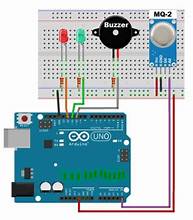
2) Microcontroller
- Arduino Uno or ESP8266 NodeMCU: These are popular choices for processing sensor data and managing communication.
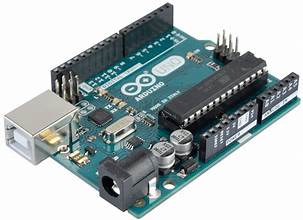
3) Communication Modules
- GSM Module: For sending SMS alerts.
- Wi-Fi Module (ESP8266): For IoT-based systems to send data to cloud services.
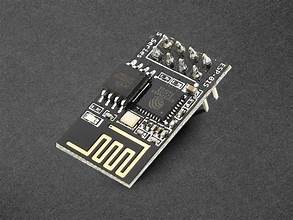
4) Power Supply
- A reliable power source to ensure continuous operation of the system.
5) Display Units
- LCD Display: To show real-time gas concentration levels.
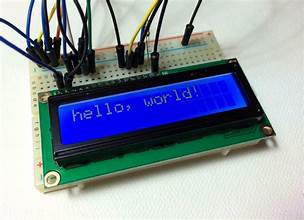
6) Alert Mechanisms
- Buzzer: For audible alerts.
- LED Indicators: To provide visual alerts.
7) Additional Sensors
- Ultrasonic Sensor: To detect blockages in the sewage system.
- Water Level Sensor: To monitor the water level and prevent overflow.
8) Connectivity and Data Storage:
- Cloud Services (e.g., Firebase, ThingSpeak): For storing and analyzing data remotely.
- Mobile Application: For remote monitoring and receiving alerts.

9) Miscellaneous
- Breadboard and Connecting Wires: For prototyping and connections.
- Enclosure: To protect the components from environmental factors.
IV. METHODOLOGY
The methodology for developing a sewage gas monitoring and alert system involves several key steps, from sensor integration to data processing and alert mechanisms. Here’s a detailed breakdown:
1) System Design and Architecture
- Component Selection: Choose appropriate gas sensors (e.g., MQ-4 for methane, MQ-7 for carbon monoxide, MQ-136 for hydrogen sulfide) based on the specific gases to be monitored.
- Microcontroller: Select a microcontroller like Arduino or ESP8266 NodeMCU for data processing and control.
- Communication Module: Use GSM, WiFi, or LoRaWAN modules for data transmission and alert notifications.
2) Sensor Integration
- Wiring and Calibration: Connect the gas sensors to the microcontroller. Calibrate each sensor to ensure accurate readings. Calibration involves exposing the sensors to known concentrations of gases and adjusting the sensor output accordingly.
- Power Supply: Ensure a stable power supply for the sensors and microcontroller, possibly using batteries or a direct power source.
3) Data Processing
- Programming the Microcontroller: Write code to read data from the sensors, process the data, and determine if gas concentrations exceed predefined safety thresholds.
- Threshold Setting: Define safe levels for each gas. For example, methane (CH4) should not exceed 5% in air, hydrogen sulfide (H2S) should be below 10 ppm, and carbon monoxide (CO) should be under 50 ppm.
4) Communication and Alert Mechanism
- Real-Time Monitoring: Implement real-time data transmission to a central server or cloud platform using the communication module.
- Alert System: Develop an alert system that sends notifications via SMS, email, or mobile app when gas levels exceed safe thresholds. This can be achieved using services like Twilio for SMS or Firebase for app notifications.
5) Data Logging and Analysis
- Data Storage: Store sensor data in a cloud database (e.g., Firebase, AWS) or a local database for historical analysis and trend monitoring.
- Visualization: Create dashboards to visualize gas concentration trends over time, helping in predictive maintenance and risk assessment.
6) Testing and Validation
- Controlled Environment Testing: Test the system in a controlled environment to ensure accuracy and reliability. Adjust sensor calibration and threshold settings as needed
- Field Deployment: Deploy the system in actual sewage environments and monitor its performance. Collect feedback and make necessary adjustments.
7) Maintenance and Updates
- Regular Calibration: Periodically recalibrate the sensors to maintain accuracy.
- Software Updates: Update the microcontroller firmware and alert system software to improve functionality and security.
V. PROPOSED SYSTEM
A sewage gas monitoring and alert system can play a critical role in public safety, especially for detecting hazardous gases such as methane (CH?), hydrogen sulphide (H?S), and ammonia (NH?), which are common in sewage environments. Here's an outline of how such a system could be designed:
1) Gas Sensors
Methane Sensor (CH?): Methane is a highly flammable gas and can lead to explosions if not monitored properly.
Hydrogen Sulphide Sensor (H?S): H?S is toxic and causes harm at low concentrations, making it essential for early detection.
Ammonia Sensor (NH?): Ammonia is another harmful gas that can irritate the respiratory system.
Additional sensors can be included to detect oxygen levels and other toxic gases as required by the local environment.
2) Data Collection
Install these sensors at key points in the sewage system. These could include:
Sewage treatment plants
Underground sewage lines
Sewage pump stations
The sensors should be connected to a central monitoring system, either wired or wireless, based on the local infrastructure.
3) Real-Time Monitoring and Alerts:
Control System: A control system can be set up to monitor the gas levels in real time. If any of the gases exceed safe levels, an automatic alert is triggered.
Alert Types: SMS/Email Alerts: Sent to designated authorities (sewage workers, local administration, emergency services).
Public Warning System: Loudspeakers or visual alarms can be installed in high-risk areas.
Automatic Shutdown: In the case of treatment plants, the system could be integrated to stop certain operations automatically.
4) Integration with Smart Systems:
IoT Connectivity: The system could be integrated into a larger IoT framework for smart cities, feeding data to a cloud system for analysis and long-term monitoring.
Predictive Maintenance: Using AI, the system could predict when maintenance is required based on historical data.
5) Portable Gas Detectors
For workers entering confined spaces, portable gas detectors should be part of the standard safety gear to avoid exposure to dangerous gas levels.
6) Backup Power Supply:
Given the critical nature of such a system, a backup power supply is necessary to ensure monitoring during power outages.
7) Periodic Testing and Calibration:
Regular testing and calibration of the sensors to ensure the system’s accuracy and reliability.
VI. IMPLEMENTATION
1) Requirement Analysis and Site Survey
- Assessment of Gas Risks: Identify the types of gases present in the sewage system, such as methane, hydrogen sulphide, and ammonia. Understand their potential risk levels.
- Site Survey: Conduct a thorough site survey of sewage treatment plants, underground sewage lines, and high-risk areas like confined spaces or pumping stations.
- Determine Monitoring Points: Based on the gas risk and the site survey, decide on the key locations for sensor installation.
2) System Design
- Select Sensors:
- Methane (CH?) sensor
- Hydrogen sulphide (H?S) sensor
- Ammonia (NH?) sensor
- Oxygen (O?) sensor (optional, to monitor breathable air levels)
- Determine Communication Protocol: Choose between wired (Ethernet) or wireless (Wi-Fi, LoRa, or cellular) communication based on the distance and infrastructure available.
- Control Unit: Design the control unit, which could be a PLC (Programmable Logic Controller) or a microcontroller-based system that reads data from the sensors and triggers alerts.
- Alert Mechanism:
- Visual and audible alarms (for local alerting)
- Remote alerts through SMS, email, or push notifications
- Emergency shutdown procedures for automatic control of operations
3) Procurement of Components
- Gas Sensors: Procure reliable gas sensors compatible with the environment (industrial-grade sensors with long life and high accuracy).
- Control System: Select a control system that can handle multiple inputs from sensors, process data, and trigger alerts.
- Communication Devices: Depending on the design, purchase communication modules such as Wi-Fi, GSM, or LoRa transmitters for remote monitoring.
- Power Supply and Backup: Ensure there’s a constant power supply, including a UPS (Uninterruptible Power Supply) or backup generator to avoid downtime.
4) Installation and Setup
- Sensor Installation: Install the sensors in key locations across the sewage network. Ensure proper placement to avoid physical damage from water or debris. Use protective enclosures if necessary.
- Control Unit Placement: Install the control unit in a secure location, preferably in a weather-protected area like a control room at the sewage treatment plant or pump stations.
- Communication Setup: Set up communication lines for remote monitoring. For wireless systems, ensure the signal is strong in all key locations.
Integration with SCADA or IoT Platform: If integrating with an existing SCADA (Supervisory Control and Data Acquisition) system or an IoT platform, configure the sensors to report data to the central dashboard.
5) Software Configuration and Calibration
- Threshold Settings: Program the control unit with safe threshold levels for each gas type (CH?, H?S, NH?, etc.). This will determine when alerts and alarms are triggered.
- Calibration: Calibrate the sensors to ensure accuracy. This might require test gases to simulate hazardous conditions.
- Alert Configuration: Set up SMS/email notifications, alarms, and any automated actions (like equipment shutdown) in response to high gas levels.
6) Testing
- Simulate Gas Leaks: Simulate different gas leak scenarios to verify that the system responds appropriately—triggering alerts, alarms, and remote notifications.
- Verify Sensor Accuracy: Test the accuracy of each sensor by comparing readings against known concentrations of gases.
- Emergency Protocol Check: Ensure that emergency shutdown or evacuation procedures are initiated when necessary.
7) Training and Safety Measures
- Staff Training: Train staff and workers on the use of the monitoring system and the meaning of different alarms and alerts. Include emergency response procedures.
- Portable Detectors: Provide portable gas detectors for workers in high-risk areas or those entering confined spaces. Train them on proper use.
- PPE: Ensure workers have adequate personal protective equipment (PPE) for hazardous gas environments.
8) Monitoring and Maintenance
Continuous Monitoring: Monitor gas levels continuously via a dashboard or a SCADA system. Review trends and analytics to detect potential problems.
Scheduled Maintenance: Set up a maintenance schedule for cleaning and recalibrating the sensors. Replace worn-out sensors promptly.
Battery and Power Checks: Periodically check the backup power supply and battery systems to ensure reliability during outages.
9) Data Logging and Analytics
Data Storage: Store gas level readings and alarms for historical analysis. This can be used for regulatory reporting and improving system performance.
AI & Predictive Analytics: Implement AI tools to analyze data for patterns and predict future maintenance needs or gas concentration risks.
10) Compliance and Regulations
Ensure the system meets local safety and environmental regulations. This may involve regular audits, testing, and certification from government bodies or industry-standard organizations.
VII. BLOCK DIAGRAM
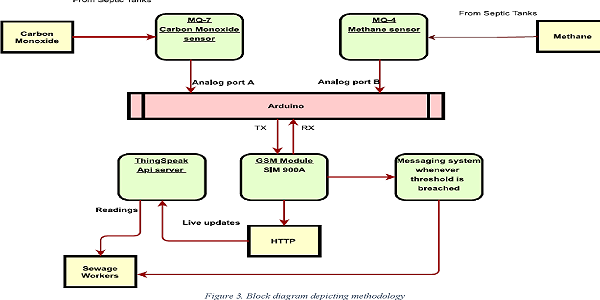
Conclusion
Developing and implementing an IoT-based smart device for sewage gas monitoring and alerting systems has the potential to dramatically enhance sewage system management and reduce the hazards related to hazardous gas emissions. These monitoring systems provide real-time monitoring, data analysis, and timely notifications to pertinent stakeholders by using developments in gas sensor technology, data processing algorithms, networking solutions, and alert mechanisms. To enable the successful deployment and operation of such systems, a number of issues must be resolved. These difficulties include environmental considerations, cost effectiveness, data security and privacy, scalability and flexibility, integration with current systems, sensor calibration and reliability, and power management. The implementation of a sewage gas monitoring and alert system is a critical safety measure in protecting public health and infrastructure. By continuously tracking the levels of harmful gases such as hydrogen sulfide, methane, and ammonia, the system ensures that dangerous conditions are detected early. Immediate alerts allow for quick responses, minimizing risks such as explosions, toxic exposures, or environmental contamination.Moreover, integrating this system with advanced data analytics can help predict potential hazards and optimize maintenance schedules. The installation of these systems will not only enhance operational safety but also contribute to regulatory compliance and the well-being of communities.In conclusion, investing in sewage gas monitoring technology is a proactive approach that significantly reduces the risks associated with sewage systems, promoting a safer and more sustainable environment.A sewage gas monitoring and alert system is essential for ensuring the safety of workers and the environment in sewage treatment facilities. By leveraging modern technologies such as IoT, real-time data processing, and remote monitoring, these systems can effectively detect and alert about hazardous gas levels. Key benefits include: 1) Enhanced Safety: Immediate alerts help prevent exposure to toxic gases like methane, hydrogen sulfide, and ammonia. 2) Real-Time Monitoring: Continuous data collection and analysis provide up-to-date information on gas concentrations. 3) Remote Accessibility: Mobile applications and cloud services allow for remote monitoring and management. 4) Preventive Maintenance: Early detection of gas leaks or blockages can prevent larger issues and reduce maintenance costs. However, challenges such as sensor accuracy, environmental conditions, reliable power supply, and data transmission need to be addressed to ensure the system’s effectiveness and durability.Overall, with proper implementation and regular maintenance, sewage gas monitoring and alert systems can significantly improve safety and operational efficiency in sewage management.
References
[1] Gao, S., Tang, Q., Zhu, W., & Wang, Y. (2020). Internet of Things-Based Sewage Monitoring System. In 2020 6th International Conference on Control, Automation and Robotics (ICCAR) (pp. 116-121). IEEE. DOI: 10.1109/ICCAR48335.2020.9107993. [2] Sharma, M., Rathi, A, Singh, H., & Singh, G. (2021). IoT-Based Smart Sewage Monitoring System: A Comprehensive Review. International Journal of Scientific Research in Computer Science, Engineering, and Information Technology, 7(4), 771-776. [3] Geng Chen and Le Wang: “Aimed at the real-time monitoring of Sewage in the service area”.2017. [4] “Toxic gas detection using IOT Sensors”: AComprehensive study S Sindhu, DM Saravanan, SSrividhya - European Journal Of Molecular, 2020. [5] Gavhane, R., & Bagade, S. (2020). IoT-Based Sewage Treatment Plant for Smart City. In 2020 International Conference on Computational Performance Evaluation (ComPE) (pp. 1-4). IEEE. DOI: 10.1109/ComPE51109.2020.00010
Copyright
Copyright © 2024 Payal Gomase, Kanchan Bembalge, Ravina Hedau, Shruti Modak, Khushi Tagde. This is an open access article distributed under the Creative Commons Attribution License, which permits unrestricted use, distribution, and reproduction in any medium, provided the original work is properly cited.

Download Paper
Paper Id : IJRASET64332
Publish Date : 2024-09-24
ISSN : 2321-9653
Publisher Name : IJRASET
DOI Link : Click Here
 Submit Paper Online
Submit Paper Online

